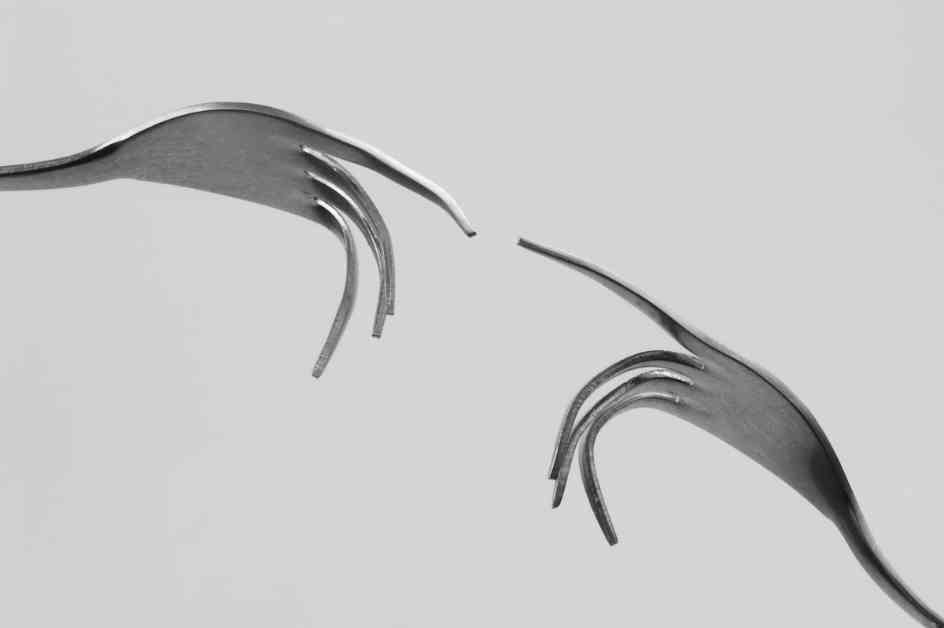Elon Musk’s Dead End: A Fork in the Road
Elon Musk, the tech titan known for his ambitious ventures and futuristic visions, recently made headlines with a peculiar announcement. On December 7, 2024, Musk unveiled a striking piece of artwork commissioned for Tesla HQ—A Fork in the Road. This monumental sculpture, situated at the convergence of three paths, serves as a literal representation of a pivotal decision point. Far from a mere decorative piece, this fork in the road symbolizes a deeper narrative within the tech realm—a narrative of existential anxieties and grand ambitions.
Unpacking the Symbolism: A Fork in the Road
At first glance, Musk’s Fork in the Road may seem like a whimsical art installation. However, beneath its surface lies a complex web of references and implications. The theme of a “fork in the road” resonates with a broader trend in the tech industry—a fixation on looming existential threats and the quest for survival on a cosmic scale. This mindset draws inspiration from cold war-era notions and the search for extraterrestrial intelligence, hinting at a binary view of humanity’s future. It posits two starkly divergent paths—one leading to boundless prosperity and expansion, the other to the collapse of civilization and potential extinction.
This existential unease came to the forefront when Musk cryptically captioned an image of the sculpture, alluding to the “Fermi Great Filters.” This concept intertwines the Fermi paradox and the idea of existential filters, reflecting a deep-seated concern about the trajectory of human civilization and its place in the cosmos. The Fermi paradox, originating from a lunchtime chat among scientists in 1950, questions the absence of evidence for extraterrestrial life despite the vast expanse of the universe. It prompts contemplation about potential obstacles that may impede civilizations from reaching a stage of interstellar communication or travel—a concept known as the Great Filter.
The Tech Visionaries’ Dilemma: Embracing Complexity
The underlying premise of Musk’s sculpture and his references to cosmic filters and civilization’s trajectory reflect a broader narrative within the tech industry—a narrative of urgency and ambition tinged with existential dread. Tech titans like Musk are investing heavily in space exploration, advocating for radical solutions to global challenges, and championing visions of multiplanetary settlement as a means of securing humanity’s future.
However, this narrative of technological salvation and cosmic destiny raises critical questions about the role of tech billionaires in shaping our collective future. While the Kardashev scale—a framework classifying civilizations based on energy use—provides a roadmap for advancement, it also poses ethical dilemmas and challenges the simplistic dichotomy of progress versus doom. Viewing the future through the lens of all-or-nothing scenarios risks oversimplifying the complexities of human civilization and overlooking the nuances of social, political, and environmental dynamics.
Ultimately, the real fork in the road lies not in a binary choice between survival and extinction, but in embracing a more nuanced vision of progress—one that acknowledges the multiplicity of paths and the imperative of holistic societal transformation. As we navigate the uncertainties of the future, it is essential to question dominant narratives, challenge deterministic frameworks, and advocate for a future that prioritizes collaboration, equity, and sustainability.
In conclusion, Musk’s Fork in the Road serves as a poignant reminder of the crossroads facing humanity—a reminder to tread carefully, considerately, and consciously as we navigate the complexities of our collective destiny. As we stand at this symbolic intersection, let us choose a path that leads not only to survival but to flourishing, resilience, and shared prosperity for all. The future is not predetermined; it is ours to shape, to mold, and to illuminate with the collective brilliance of human ingenuity and empathy.










